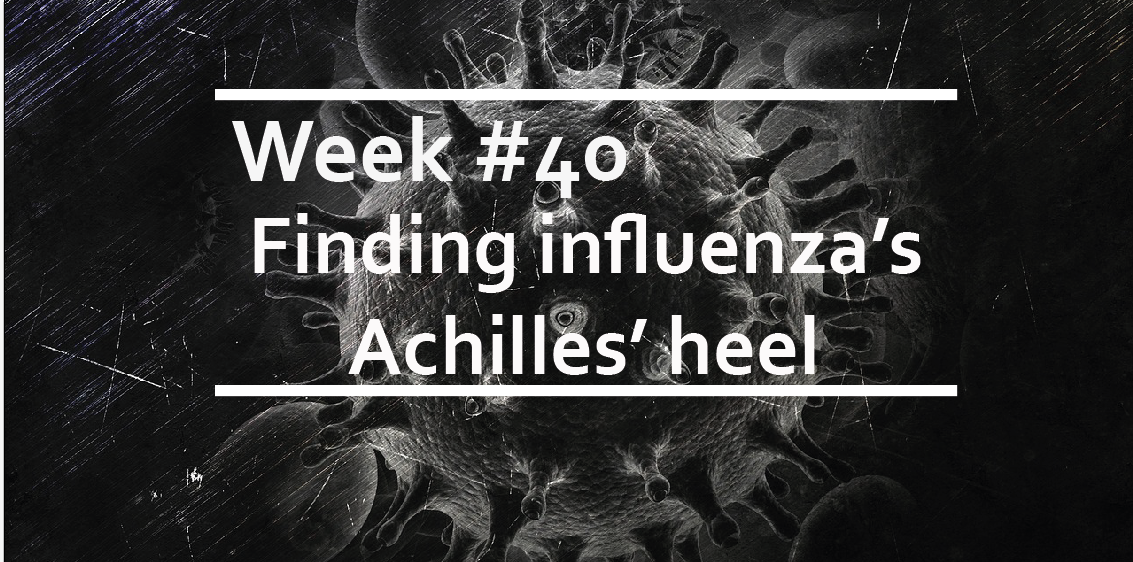Finding influenza’s Achilles’ heel
Influenza virus is a moving target
The influenza virus is a moving target. Because of its constant mutations and genetic re-assortments, clinical virologists struggle to keep up (read more about it here).
Point mutations in the amino acid sequences encoding influenza’s surface glycoproteins accumulate over time. These accumulations of genetic changes produce viruses that are closely related to each other but sufficiently different to escape the host’s pre-existing immunity. This type of slow deviation is known as antigenic drift and is why we have to reformulate flu vaccines every year.
The evolution of influenza: antigenic drift
It is commonly assumed that antibody responses against influenza are polarized in the following way: strong antibody responses target highly variable antigenic epitopes, which consequently undergo antigenic drift, while weak antibody responses develop against conserved epitopes.
This is a problem for vaccine development. Within this antigenic drift dogma, the current influenza targets used for vaccine development are either highly immunogenic epitopes of high variability (effective, but you must continuously update the vaccine when the virus mutates) or conserved epitopes of low immunogenicity (no need to update, but these vaccines have low efficacy).
An alternative model: antigenic thrift
However, an alternative model has been proposed, called antigenic thrift. The antigenic thrift model includes the existence of influenza epitopes of low variability, but that elicit a strong immune response.
If such epitopes exist, their high immunogenicity (so high efficacy) and limited variability (so no need to continuously update) would make them ideal vaccine targets. Importantly, such low variability epitopes would be shared across multiple divergent strains, thus, a universal influenza vaccine might be achievable!
An Oxford-based team recently went in search of this influenza Achilles’ heel, and it seems their efforts were successful. In Nature Communications, Thompson et al. report finding a naturally protective epitope of limited variability and suitable flu vaccine target. Below we take a closer look.
Kids’ sera react to epitopes the donors could never have experienced
First, to test for the presence of epitopes of limited variability, the authors focus on the surface glycoprotein haemagglutinin (HA). Using pseudotyped lentiviruses (pseudotyped means a lentivirus expressing the viral envelope protein of a different virus) displaying the H1 HA proteins from a panel of historical influenza isolates, together with sera collected from 88 UK children in 2006/2007, the authors found that most of the children’s sera could cross-react with these historical isolates, the majority of which these kids could not possibly have experienced. This periodic cross-reactivity to historical strains doesn’t fit with the antigenic drift theory, in which antigenic distance should accumulate linearly over time.
The authors then noted how three of the panel of historical influenza isolates showing reactivity all shared a common deletion at position 147 of the HA protein. Suspecting that this deletion at position 147 might be responsible for the observed cross-reactivity to historical strains, the authors set up an experiment in which they removed this deletion by inserting a positively charged amino acid (as found in other strains). Indeed, this amino acid insertion reduced or abolished the cross-reactivity for these influenza isolates, demonstrating that the 147 deletion mediates much of the observed cross-reactivity.
Next, using an in silico approach together with experimentally-determined crystal structure data, the authors were able to identify an antibody binding site of low variability and containing the 147 position, which they named OREO. Bingo! A candidate protective epitope of limited variability!
Further analyses determined five conformations of this epitope that appear and disappear in a cyclical manner during the known evolutionary history of influenza. By vaccinating mice using these five epitope conformations, the authors show that the mice produce antibodies that are cross-reactive to multiple historical strains.
Moreover, these vaccination regimens in mice could protect against subsequent heterologous challenge. For example, groups of mice vaccinated with epitopes found in 2006 and 1977 influenza strains (2006-like and 1977-like epitopes) had immunity when challenged with a strain collected in 1934.
Thus, it seems that the OREO epitope is constrained to a limited number of possible amino acids it can cycle between, meaning that it cannot drift as much as the currently target highly variable epitopes.
How does these findings translate to vaccine development efforts? Well, in theory, vaccines targeting OREO might only need to be updated once a decade, rather than every season as we currently do. The authors also suppose that this same framework can now be applied to identify similar epitopes of limited variability in out influenza subtypes, such as swine and avian flu, and possibly in other viruses.




